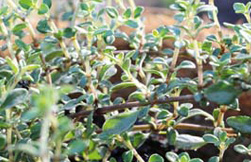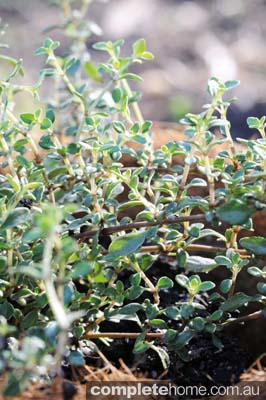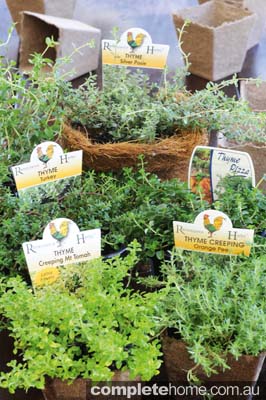Thyme is one of the most valuable herbs you can grow
Thyme is one of those invaluable herbs that have a place in the garden, kitchen and medicine chest, so versatile is its appeal. In the garden it’s a decorative groundcover with pretty clusters of flowers that attract bees and other friendly pollinators. In the kitchen it’s the perfect partner to lamb, chicken and beetroot, and medicinally it has been used for centuries to reduce the severity of colds, treat skin infections and as a potent antiseptic.
Common thyme (Thymus vulgaris) is the one most will be familiar with — grown for its strongly aromatic grey-green foliage and flowers that bloom in shades of white, pink or purple. Then there’s lemon thyme (Thymus citriodorus) with citrus-scented leaves that make a great accompaniment to lamb cutlets; variegated thyme (Thymus x citriodorus ‘Variegata’) with decorative two-toned foliage; turkey thyme, which is the perfect choice for flavouring poultry dishes; and creeping thyme, a mat-forming perennial that carpets the ground. And that’s just to name a few!
Thyme is native to areas of the Mediterranean, so it’s tough and easy to grow. Grow it in pots on a sunny balcony or as a decorative groundcover, or combine it with other perennials in the flower border. Creeping thyme even makes a lovely scented lawn alternative or is great between stepping-stones or garden pavers.
Health properties: Thyme has one of the highest antioxidant levels of all herbs; it is one of the richest sources of potassium, iron, calcium, manganese, magnesium, and selenium and is high in essential vitamins like A, C and B6. So it’s no wonder it has been used for centuries to help prevent disease and promote good health.
Thyme also has strong antiseptic and antifungal properties. A balm made from the leaves can be effective in helping to heal cuts and burns and to treat skin conditions and acne. Thyme tea is commonly used to help combat colds and flu.
Growing: Plant it in a warm, sunny spot with well-drained soil.
Planting: Sow seed in spring or take cuttings in spring and autumn. Plants can also be divided during spring or autumn. Potted plants are generally available year round.
Pests and diseases: Thyme, when grown in full sun, is pretty free from any problems. It, however, is great in the garden — substances leached from its leaves hinder surrounding plant growth, so it’s useful to reduce competition from weed or grass growth. But, if you do see any weeds popping up through the carpeting types of thyme, gently pull them out.
Harvest: Pick the leaves regularly to keep plants bushy and compact.
Storage: Any of the thyme varieties are low in moisture and therefore are very easily air-dried. Place out in direct sunlight, then when dried-out, store in a glass lidded jar to retain its flavour.
Originally in Good Organic Gardening, Volume 5, No. 3




